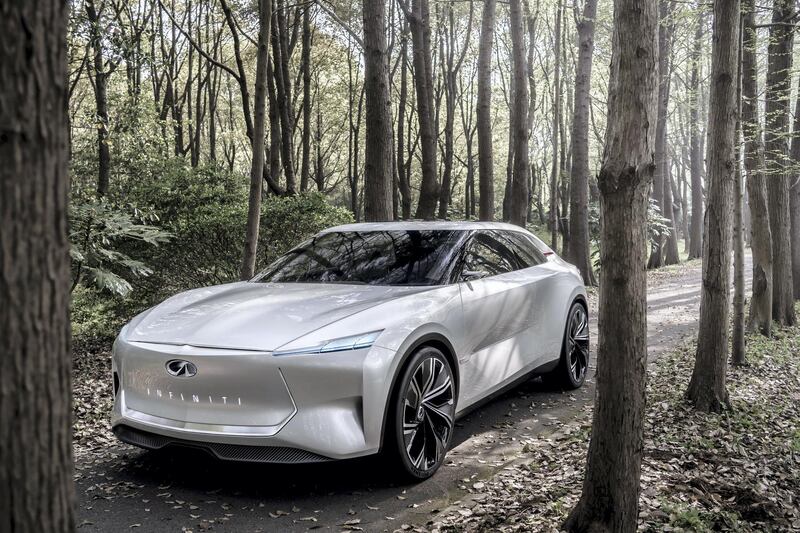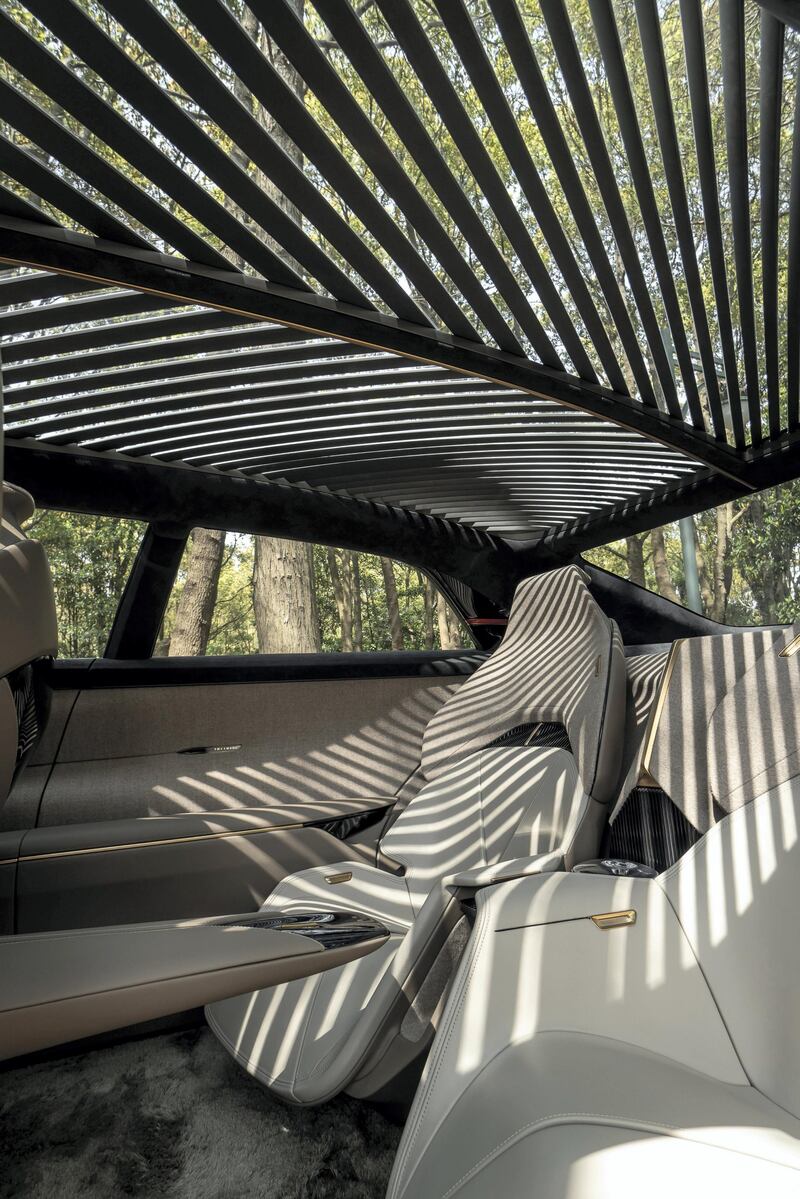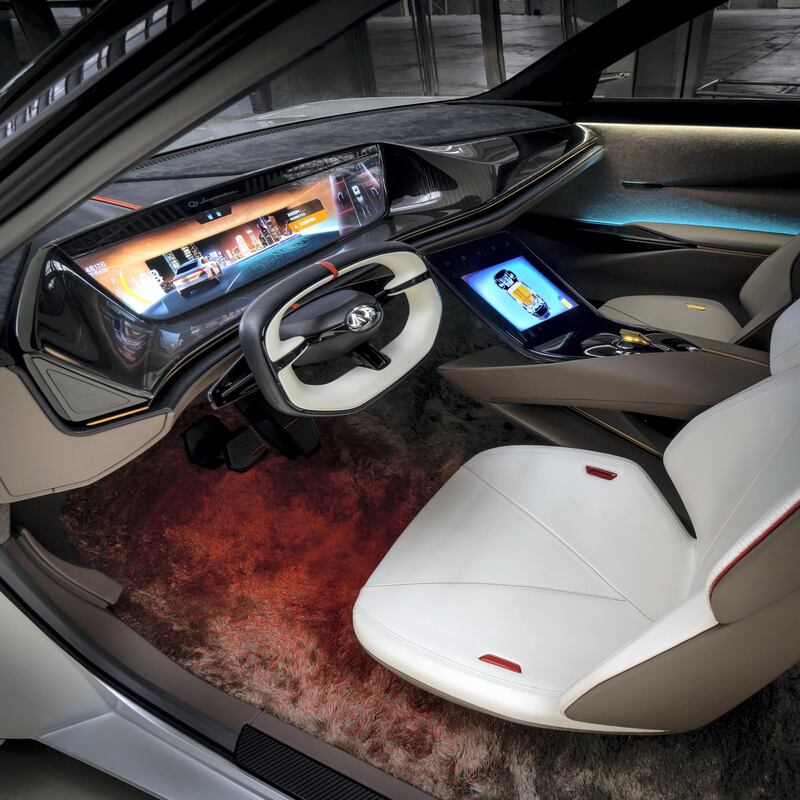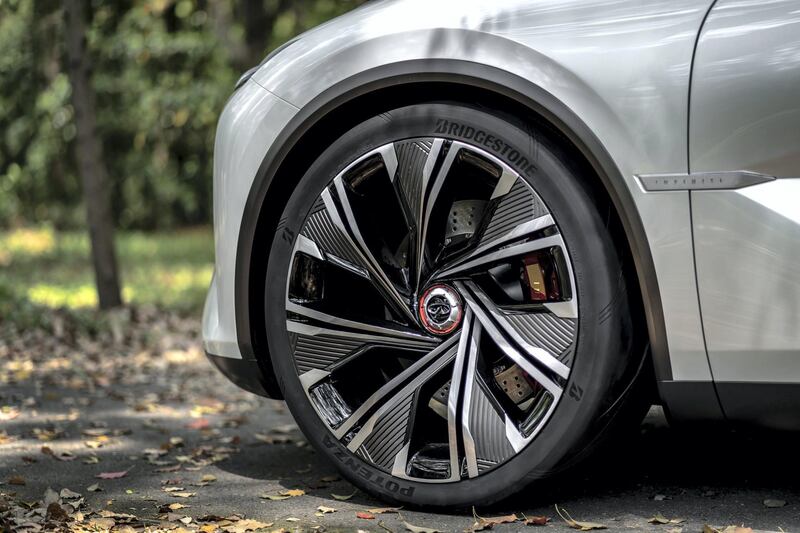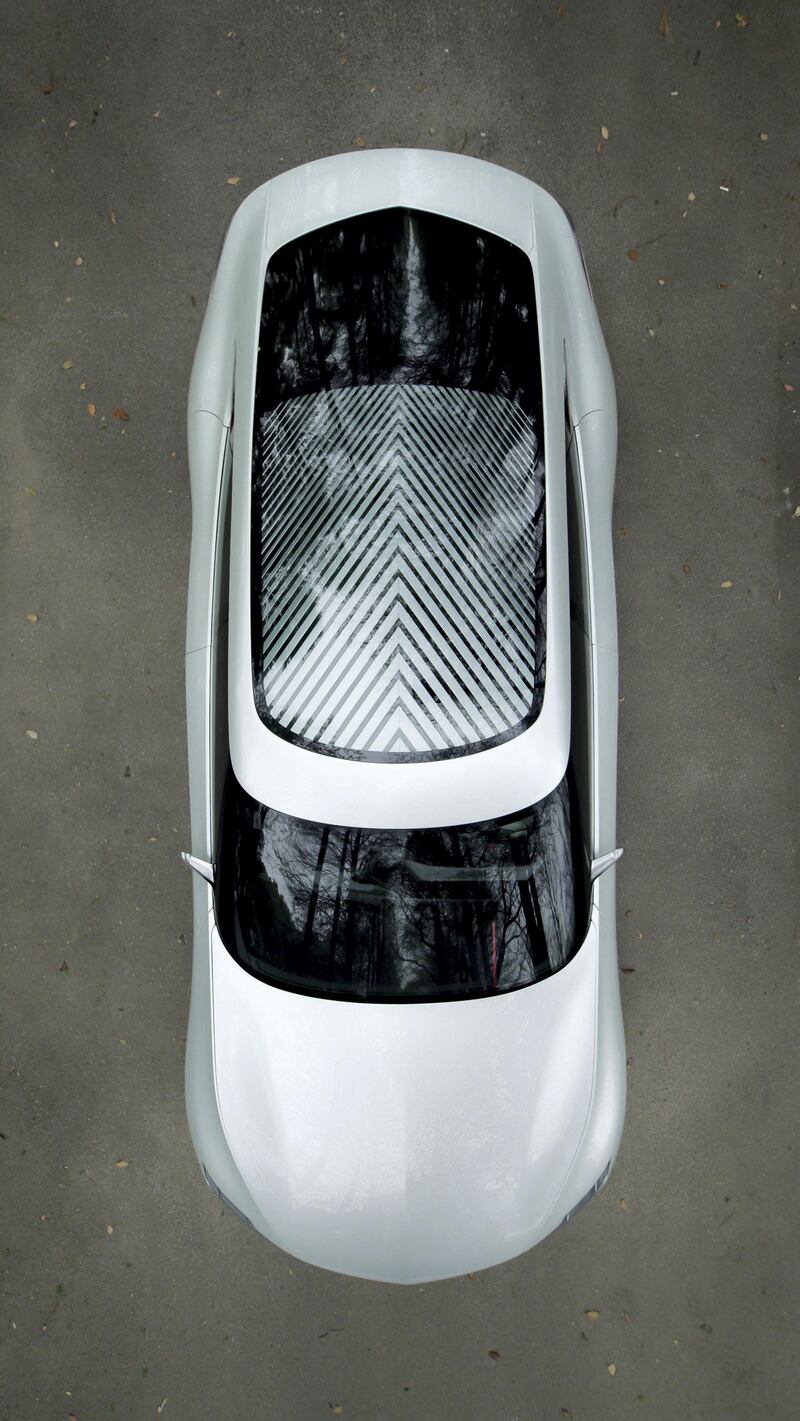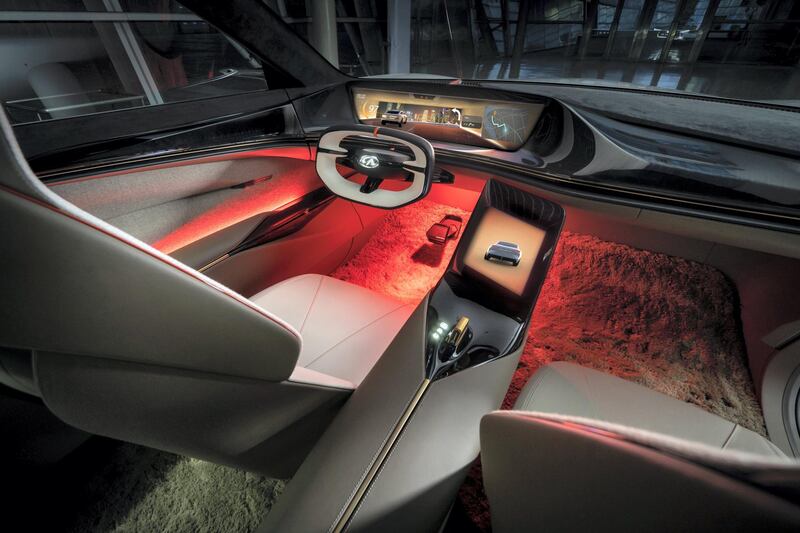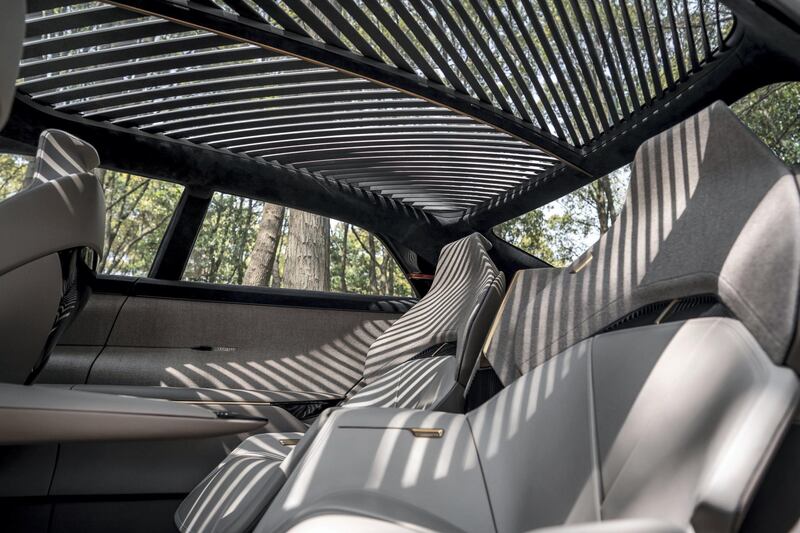The biggest question in the automotive world right now is: who will be ready for self-driving cars first, the manufacturers or the rule-makers? Karim Habib, who is of Lebanese-Canadian descent and one of the world's leading car designers, says the manufacturers are leading the race, with those making the rules and regulations still lagging behind.
As executive design director for Infiniti, Habib is focused on the next generation of electrified vehicles and the development of autonomous driving for Nissan's luxury brand. "After working on it for several years, we are getting a pretty clear idea of what the car of the future will look like, at least for this next generation," he says at Auto Shanghai, where Infiniti unveiled its QS Inspiration concept electric sports sedan.
Contrary to popular belief and the image of futuristic cars in science-fiction, steering wheels will not be tossed on to the scrap heap quite yet. "We could eliminate the steering wheel now if we wanted, because Infiniti introduced steer-by-wire to its production cars years ago, so the technology is ready and proven," Habib says. "I've driven the next-generation prototype, which allows you to use a much smaller steering wheel that retracts into the dashboard, but there are legislation issues that need to be resolved first.
"If every car was autonomous there's no problem, but the question surrounds operating in a mixed environment. If you have to take control, how quickly will the wheel come back and what's a legally acceptable time for you to regain control: milliseconds or seconds? The technology is moving quickly but I don't think we have the environment to go fully autonomous."
The QS Inspiration was partly designed in China at Infiniti's new Shanghai studios with input from its sister design facilities in London and San Diego. The company had set up its Chinese operations in Beijing, but after the Olympic Games in 2008, it moved to the more modern Shanghai, a city that is fast becoming the automotive Silicon Valley of the East.
Infiniti is a relatively young marque and only turns 30 this year. But it is based in Hong Kong on the doorstep of the world's biggest and most tech-savvy market, putting it in a strong position to take the lead in technology with its new breed of car, once it has negotiated several obstacles. "While we have toyed with many freedoms, because electric propulsion allows us to completely reimagine the car, when it comes to safety, I don't think there will be much change because we still need crumple zones and passenger impact protection," says Habib, former chief designer at BMW.
"That level of design freedom probably won't arrive until the day we are 100 per cent accident-free, which means everyone is autonomous. That's also probably the time when legislations and safety requirements will finally adapt.
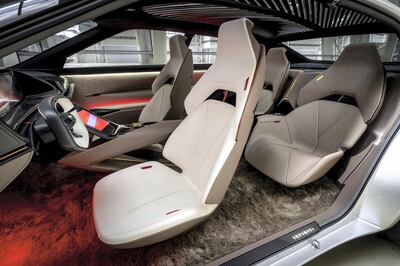
If we get to that point you could theoretically build little glass cubes on wheels, but not until then."
Within the next three years, Infiniti's first electric vehicle will be built in China for the local market. During a walk-around of the concept on the show stand in Shanghai, some of the new design freedoms were immediately obvious, such as a flat floor free from a transmission tunnel or exhaust housing, and a lack of cumbersome dashboards hiding soon-to-be-obsolete wiring and air-conditioning mechanics. "While keeping in mind legal and safety requirements, having a completely flat floor means we no longer need to have four people all facing the same direction in pairs," Habib says. "We can angle people towards each other to make conversation easier and we can work with a new type of centre console that doubles as a footrest or even a small table.
We also have the ability to relocate the air-conditioning hardware up front where the engine used to be, to free up even more space.”
The QS is the third EV concept built on this modular architecture for the Renault-Nissan Alliance, after the launch of both the Infiniti QX SUV concept and Nissan's IMS concept at the Detroit Auto Show in January. "We will share this platform across all our lines within the Alliance," Habib says.
“There’s enough flexibility in our brands to use this single platform. Nissan presented the IMS as an electrified sports sedan and we showed the QX SUV, which borrows the same ideas and architecture.”
The idea behind a one-size-fits-all platform is to develop a range of body styles that can be stretched and wrapped around the few non-negotiable EV components, to create distinctive model lines efficiently. The parts that engineers say must be included in all electric models are the electric motor in each axle and the flat-pack storage of the batteries spread across the floor. Both provide their own design quirks that create a new look to distinguish EVs from hybrid and petrol-powered cars, such as a thicker floor to house the batteries, leading to a raised ride height. That is part of the reason why many manufacturers are going straight for the SUV option with their debut EVs.
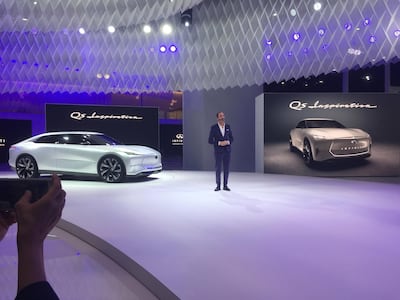
Cars such as the Jaguar I-Pace, Audi E-Tron and Tesla Model X have gone for the high-riding SUV look, but Habib says there's still a demand for a sophisticated, more traditional saloon car in the future, which is where the QS Inspiration comes in. "By designing batteries to sit as a flat-pack across the floor, the car sits higher, which has been the challenge for the QS because we were forced to create a high sedan that changed everything," he says.
"We offset the tall look on the QS Inspiration by fitting overly large wheels to keep it in proportion. QS gives new life to the traditional three-box sports sedan, yet provides an SUV-like elevated driving position."
An electric motor means cars no longer need grilles or air intakes, but while Habib says the front-end look of such vehicles has the potential to change dramatically, he admits that he has to tread carefully because the nose is also where cars carry their design signature. With a few stylised streaks, Infiniti's trademark double-grille look remains, even though it's no longer needed, while the badge is larger and three-dimensional to help fill space.
"You don't want to kill off the most identifiable part of a car," says Habib. "Every aspect of the car is changing fast but our goal is to make the technology so instinctive that it's not immediately noticeable. Everything simply has to be there and work naturally, so while we will still build driving machines for the immediate future, we also need to build luxury that will eventually turn the car into an elegant lounge space."
But not before lawyers, road-safety experts, governments and engineers agree to a set of rules.
